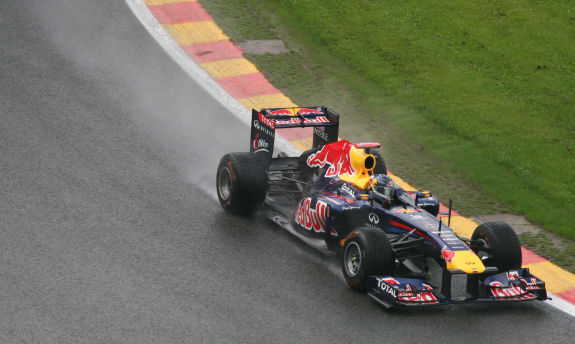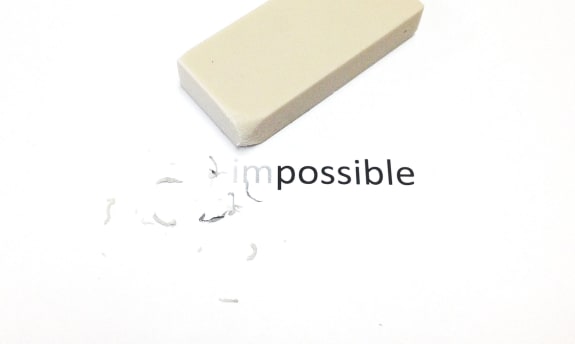What’s better: more success or less failure? More possibilities or less impossibilities? Let’s take a look at the seemingly pointless question—and discover the surprising answer.
You’ve certainly heard the saying “less is more.” It’s a reminder that there is something like overshooting the mark. Like doing too much of something that is constructive only up to a certain point—after which it becomes destructive and works against the very thing one is trying to achieve.
A few examples of that:
- An overdose of medicine
- Saying “I love you” to the person you’re dating so often that it becomes creepy
- Racing your car to arrive in time at your appointment, only to end up crashing it and never arrive

Did you know that there is another variant of “less is more?” One that helps you achieve something better by simply reducing its counterpart?
Of course, you knew that! If you want to save more money, just reduce your spending. If you want to move your body more, simply reduce your sitting idle. D’uh!
It seems so obvious that we never really ponder it—and overlook how powerful this kind of thinking really can be, especially in the context of organizations.
What’s the Difference, Really? ¶
Coming back to the two perspectives mentioned in the intro—and the difference between:
- More success or less failure?
- More possibilities or less impossibilities?
Our impulse probably is to say that the double positive actually delivers more of what we want than the double negative.
On second thought, we remember that in mathematics a double positive equals the corresponding double negative:
+1 × +10 = +10
-1 × -10 = +10
So mathematically, there isn’t a difference in the result. And yes—by definition: If we fail less we succeed more and vice versa.
If the result is the same, is there any difference in the process? Aha! I think we’re on to something:
More success or more possibilities mean adding something that doesn’t exist yet. Less failure or less impossibilities on the other hand mean removing something that’s already there. And that’s the difference:
It’s always easier and faster to destroy something existing than to create something new. Always. Everyone who ever built relationships or sandcastles knows that.

Let’s Get Practical ¶
So far, it seems like a purely academic intellectual game. Is there any practical value to this? Let’s see…
Have you ever heard someone in your company say one of the following quotes? Countless times, I guess.
We need more clarity.
But how do you add clarity in your organization, really?
Imagine water. If you want more clarity, it probably means that there is some pollution that makes life difficult and you want to get rid of. Adding clear water will never remove the contaminating particles. The only way to remove them is … well, to remove them. You filter out the unclarity—and (again by definition) what’s left is clarity. There’s no need to add any water.
Coming back to your organization: Whenever people want to add clarity, what they actually need to do is to identify and eliminate unclarities. There is no other way.
We need more speed.
How does your organization become faster?
This one’s ambiguous. You can always put your foot on the gas and accelerate, of course. (Unless it’s already at maximum…)
Or you can lift your foot off the brake and reduce deceleration. Again, both might lead to the same result—a higher speed. The question becomes: What’s more costly? Usually, lifting the brakes is vastly more efficient than going full throttle.
Returning to your organization: Whenever people want to get faster, what they first need to check is if they can identify and eliminate brakes. Chances are it’s the most efficient way to achieve what you want.
Here are a few more examples:
- To increase harmony, identify and eliminate disharmonies
- To better align people, identify and eliminate misalignments
- To promote proper behaviour, identify and eliminate existing rewards for wrong behaviour
The list goes on and on. Instead of costly creating something new right away (and not knowing where to begin), first try to efficiently erase its existing counterpart (and you’ll probably have a good sense of where to look). Chances are you’ll arrive at the same result but at lower cost.
The lesson here is to always look at the duality of the situation. If there’s an issue with the yin, first take a look at the yang.

A Small Piece of Career Advice ¶
And by the way, this subtractive way of thinking also helps on the individual level. For example: Next time you get invited to an interview for a job that you really care about, you’ve already proven to generally be a great fit. Otherwise they wouldn’t have offered the interview in the first place!
So, the aim of the interview then becomes to be the best candidate by not screwing up this impression of a generally great fit. To accomplish this, identify and (if you can) eliminate any points that could turn you into a bad candidate during the interview.
Your competitors most probably will continue to focus on selling their upside during the interview, hence neglecting their downside and subsequently screwing up at some point. You on the other hand will be more relaxed, knowing that you already sold your upside and are well prepared to handle any downside that might come up during the interview. It’s not about hiding your weaknesses—it’s about showing that you’re aware of and actively manage them.
Now hand on heart, does this approach really work? My observation is that yes, it appears to make things easier, more actionable. It’s a little less guessing and a bit more knowing. But I’m interested to hear what you think!
Conclusion: Everything Affects Everything ¶
In this article, we took a look at the power of subtractive thinking and how it can make a big difference: Instead of always trying to directly add what we want, take a look at its counterpart and try to reduce that first. It’s addition by subtraction—with the bonus of achieving the originally intended addition at significantly lower cost.
Coming back to the opening comparison: More success or less failure theoretically results in the same amount of success. Yet, less failure comes at substantially lower cost. Which in turn makes it the overall more successful approach.
Yeah, my head’s spinning, too.
In case you wonder, this insight to look at counterparts came from the below video on YouTube. The subject matter is audio mixing and how bass affects treble—but as it says early in the video itself: The fact that everything affects everything applies to life in general.

<div style="position: relative; padding-bottom: 56.25%; height: 0; overflow: hidden;">
<iframe allow="accelerometer; autoplay; clipboard-write; encrypted-media; gyroscope; picture-in-picture; web-share" allowfullscreen="allowfullscreen" loading="eager" referrerpolicy="strict-origin-when-cross-origin" src="https://www.youtube.com/embed/A7lH8F5qyOA?autoplay=0&controls=1&end=0&loop=0&mute=0&start=0" style="position: absolute; top: 0; left: 0; width: 100%; height: 100%; border:0;" title="YouTube video"></iframe>
</div>

Michael Schmidle
Founder of PrioMind. Start-up consultant, hobby music producer and blogger. Opinionated about technology, strategy, and leadership. In love with Mexico. This blog reflects my personal views.
Jan 14, 2020 · 5min read
Improving Your Chances With Non-Negotiables
Your chances of winning any game improve drastically once you learn the rules. But what if there aren’t any clear rules? Non-Negotiables are here to help. Continue…
Oct 6, 2024 · 4min read
Revolutionizing Decision-Making
Last year, I shared a simple framework for making better decisions. Little did I know it would spark a journey that led to creating PrioMind, an app that’s revolutionizing how we approach choices. Here’s the story of how four criteria evolved into a powerful decision-making tool, and what I’ve learned along the way. Continue…
Mar 5, 2023 · Oct 6, 2024 · 13min read
Four Criteria for Better Decision Making
While we all face decisions on a daily basis, we often reinvent the wheel in our process of decision making. However, there’s a set of strategic criteria that helps you making robust, fast, and comprehensible choices every time. Continue…
Feb 6, 2022 · 6min read
A Visualization of Leadership
Recently, I came across a helpful visualization of what Leadership means in times of Digital Transformation. Let me show you. Continue…



